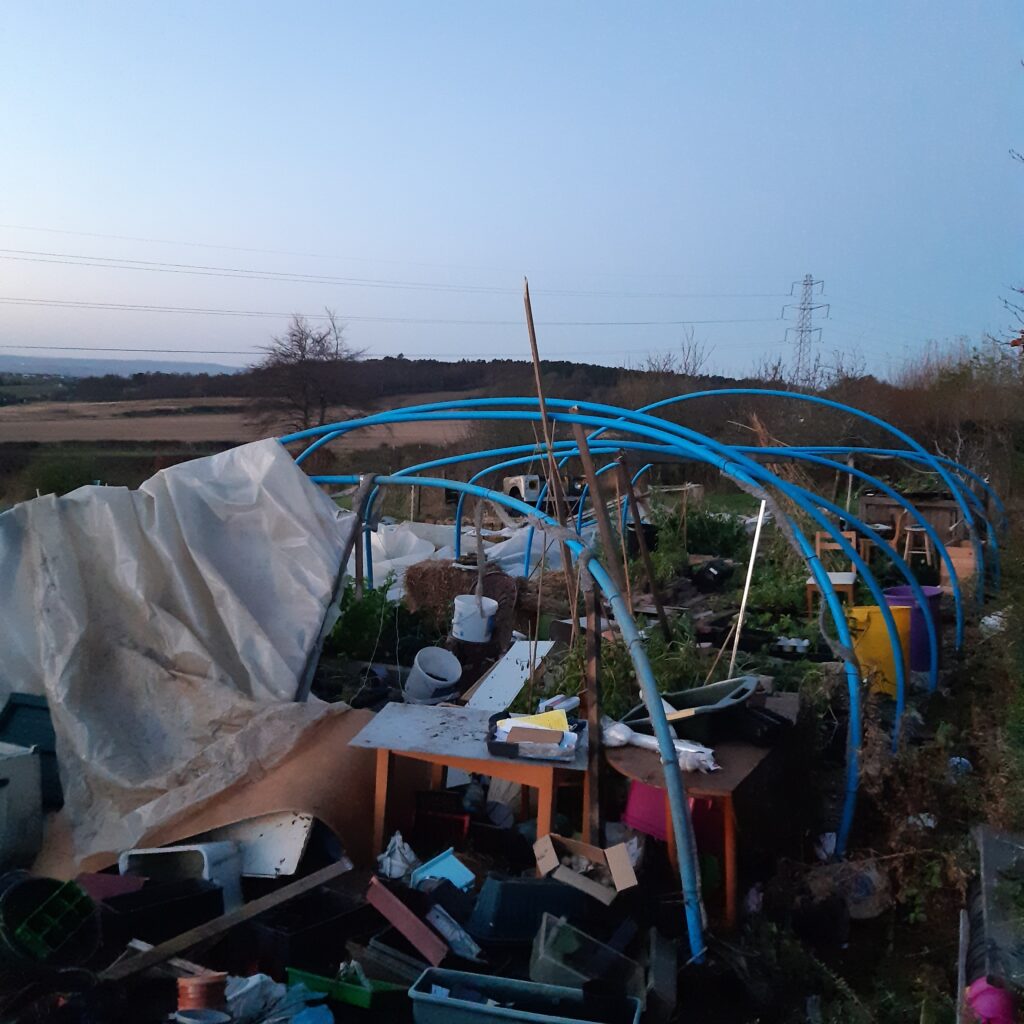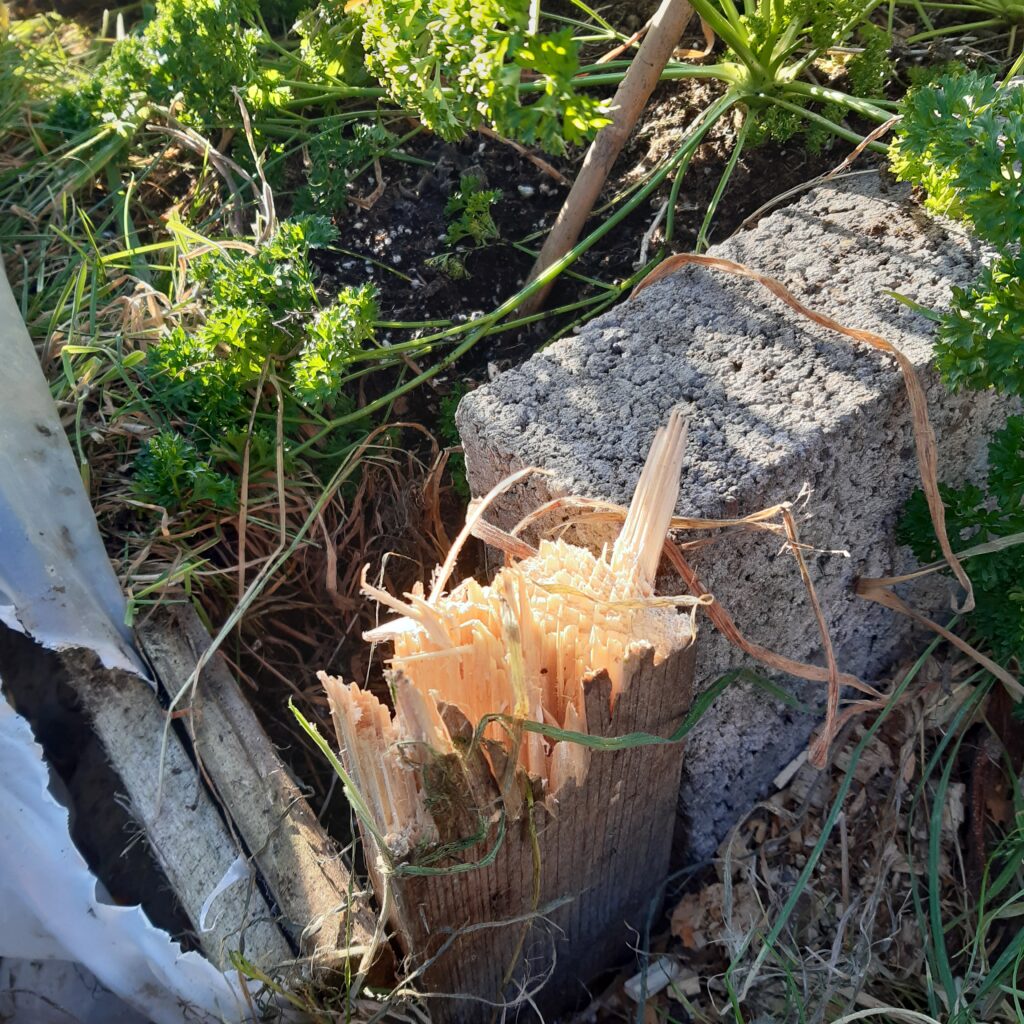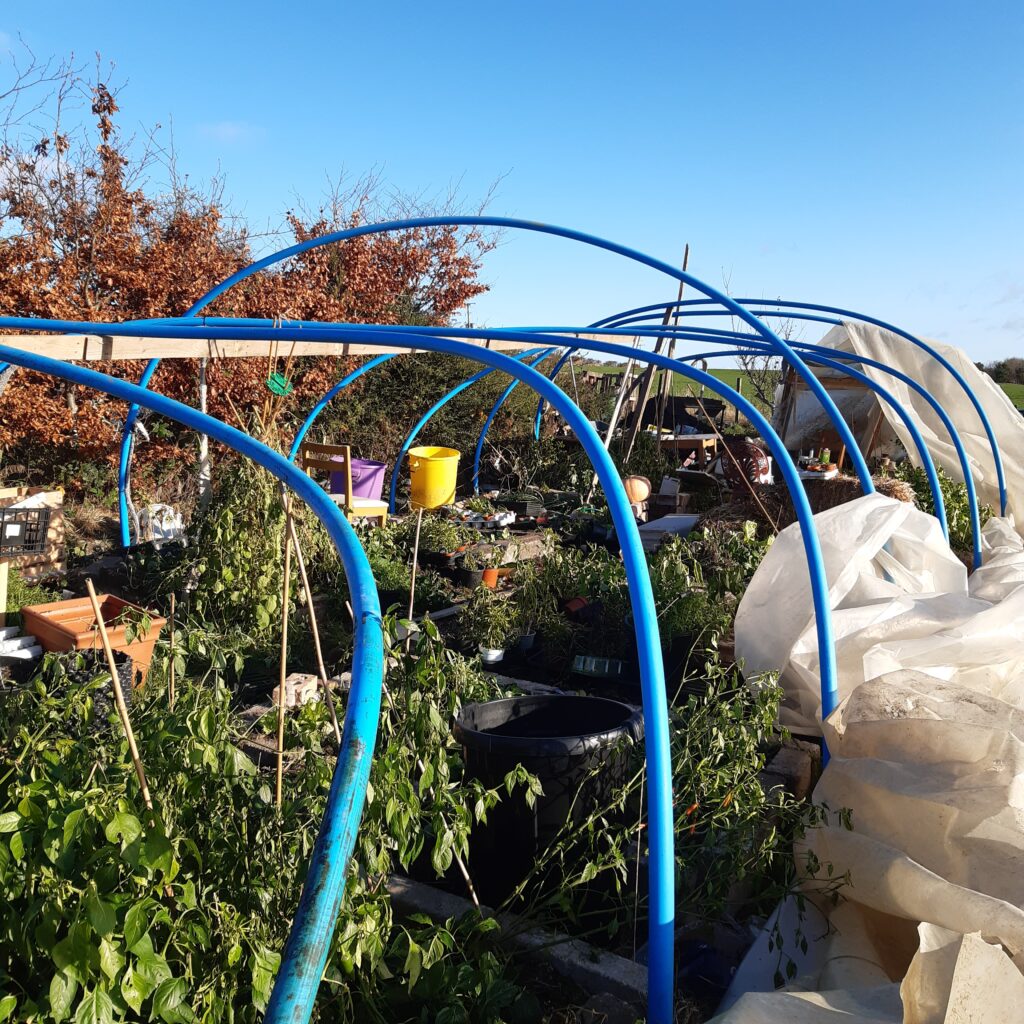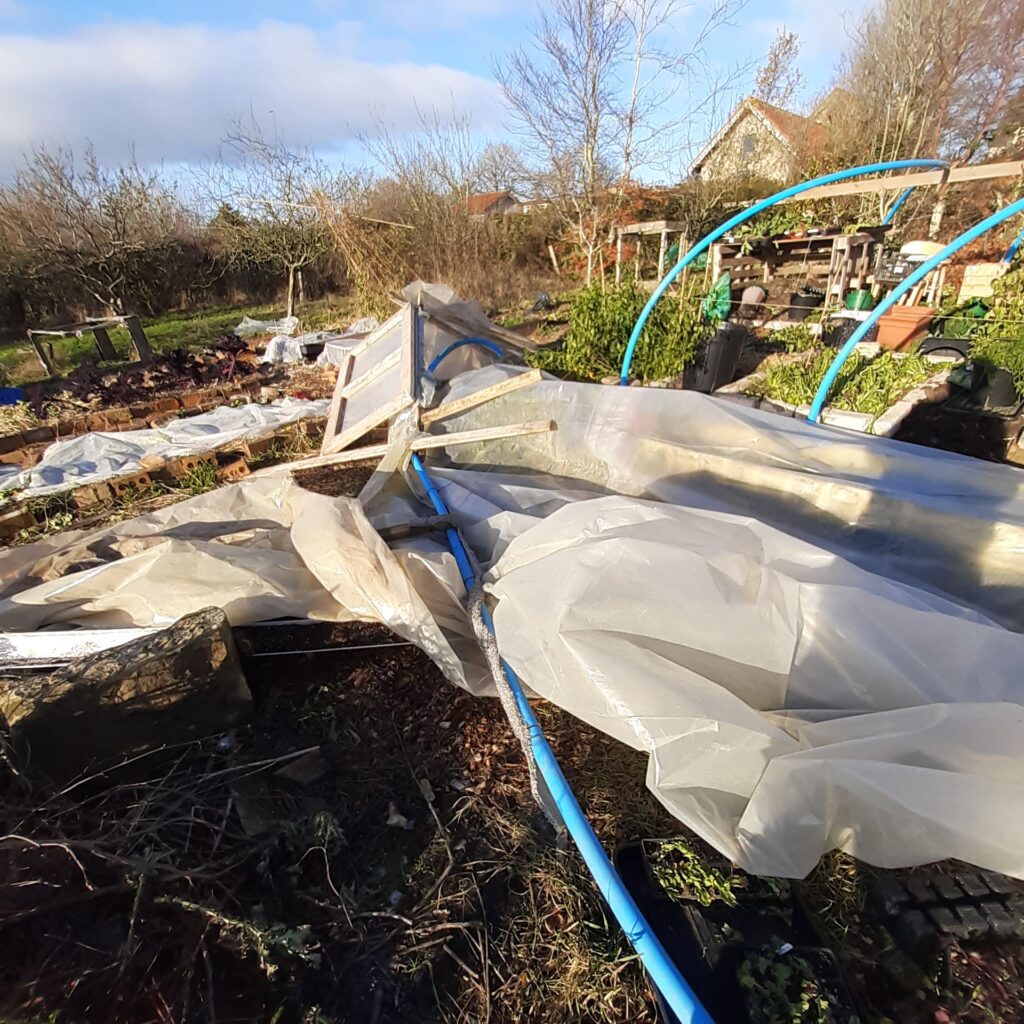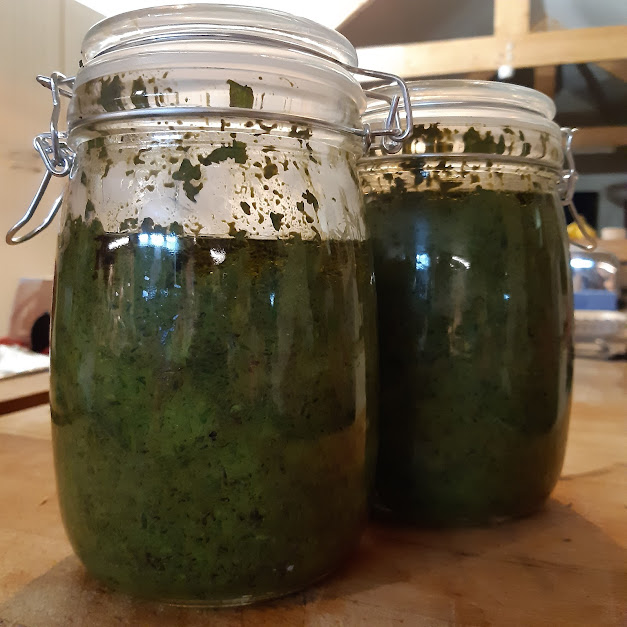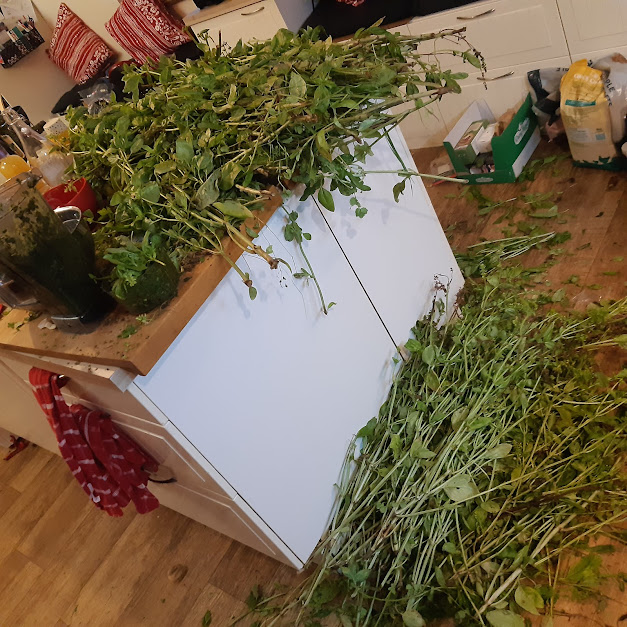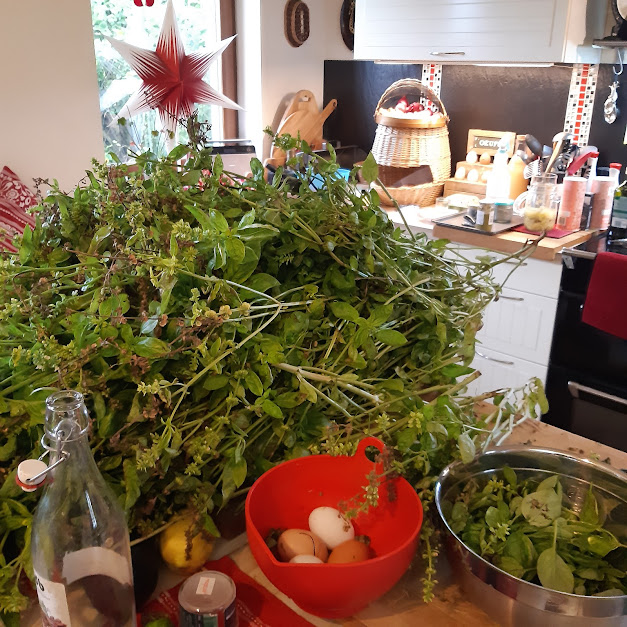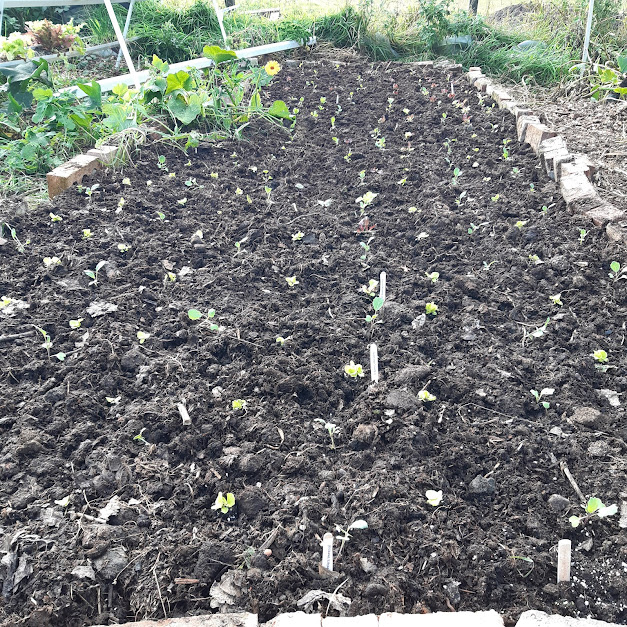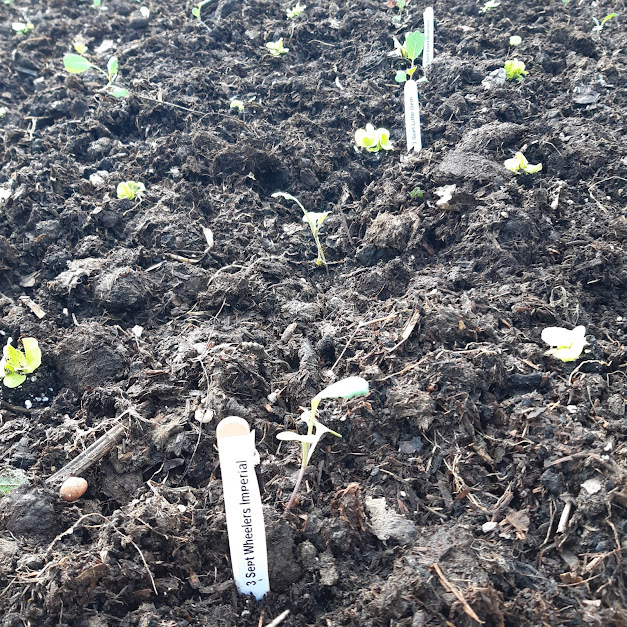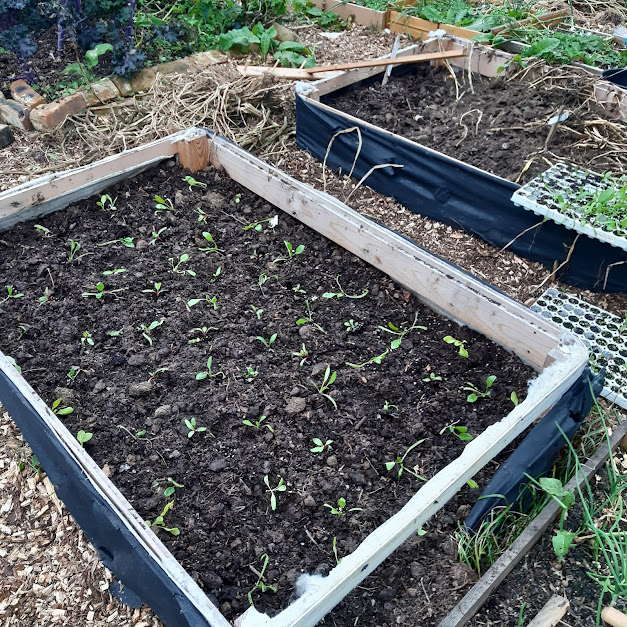Working with my community
It has been rewarding to work with schools, nursery schools and individuals who are struggling with where to start growing vegetables.
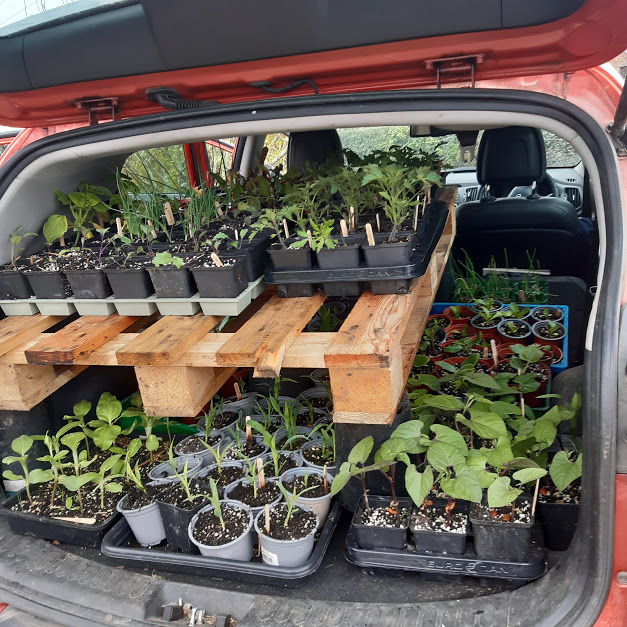
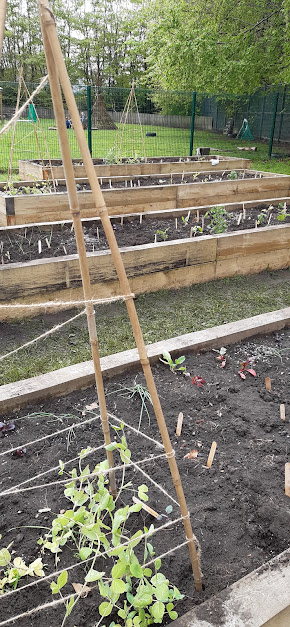
There are six raised beds for six classes and they planted hand fulls of seeds, nearly 500 seedlings, onion sets and potatoes in a day. Square foot gardening was explained, with the only real advice that the tall plants at the back so as not to shaded the wee ones, and the children decided where they wanted to plant seedlings and seeds. Each bed is completely different and the choices were made by each class.
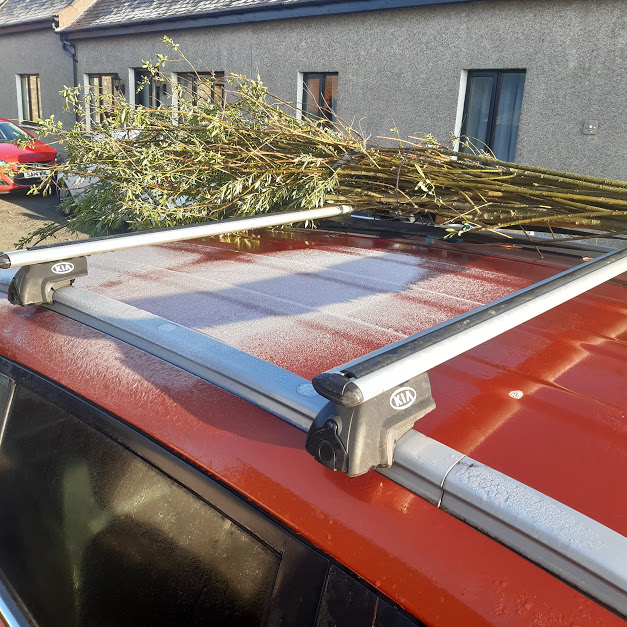
Our septic tank is a reed bed with the last bed, filled with willow that need to be pollarded regularly. My car looked like it had a Harry Potter Broom attached to the roof.
Julia’s family has an allotment and wanted to encourage her to enjoy the outdoors, growing and eating her own veggies. As I had some plastic and left over trampoline hoops it made sense to add a little poly tunnel. Turns out I’d not considered allotment planning permission rules so it was lowered by removing the legs. The Area is the same but requires a bow, to enter if you’re taller than 5′.
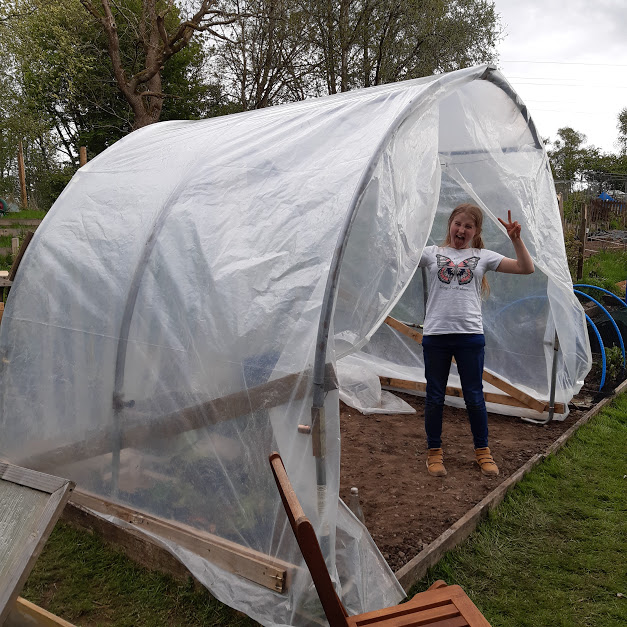
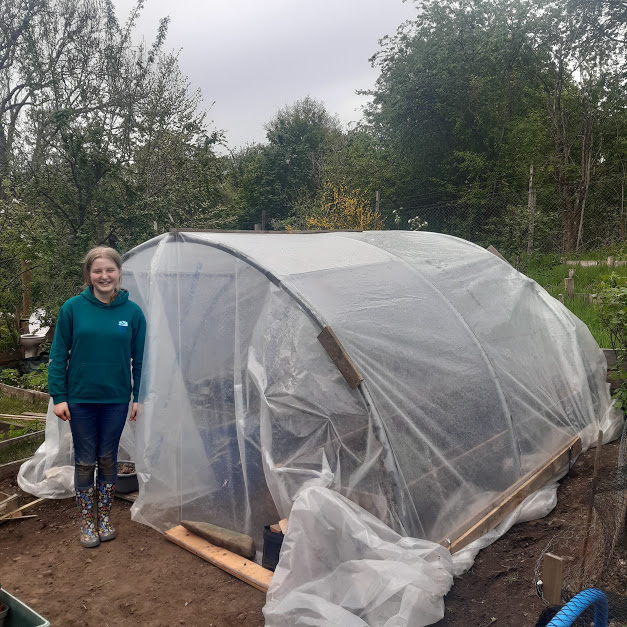
Julia painted the pallet wood with veggie oil and vinegar, the emulsion seems to be better absorbed by the wood and gives a wonderful aroma of fish and chips. Nails were chapped in and screws added to the ends to make up an 8′ x 2.5′ raised bed and 300l of compost added allowing Julia to plant up half the bed. The square foot gardening idea was used here too.
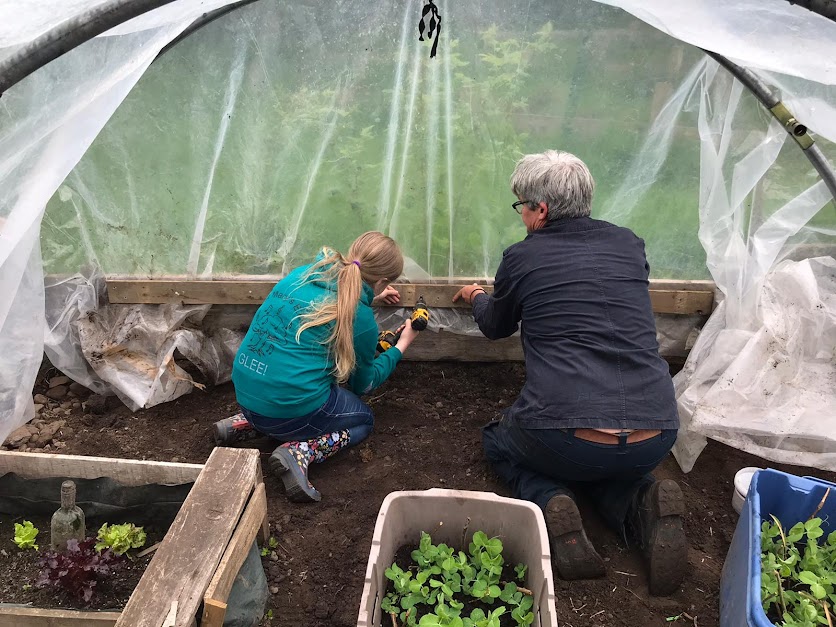
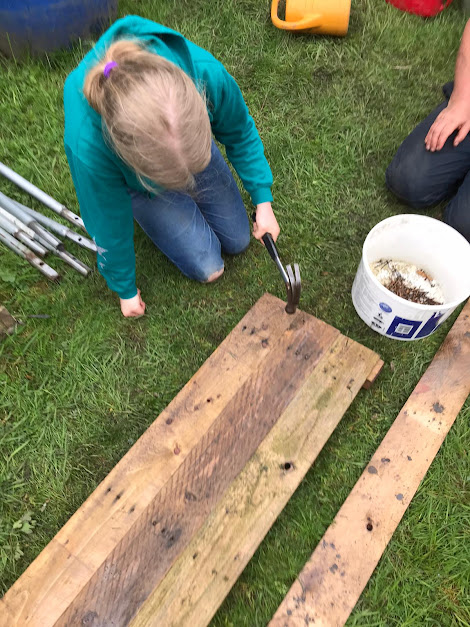
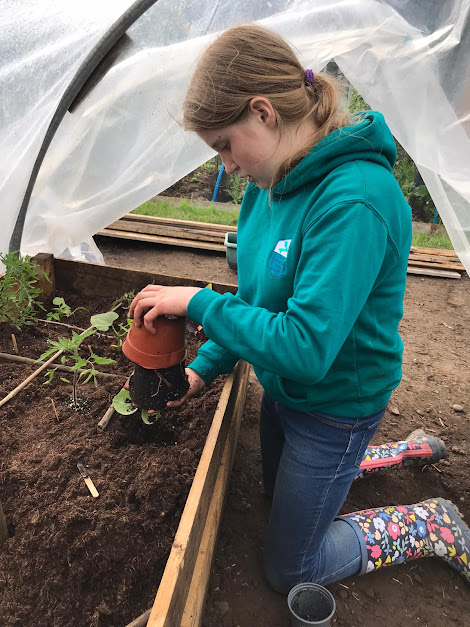
Little Bugs outdoor nursery now has a poly tunnel for really inclement weather and to grow some tomatoes and other heat loving plants. It’s not finished…..
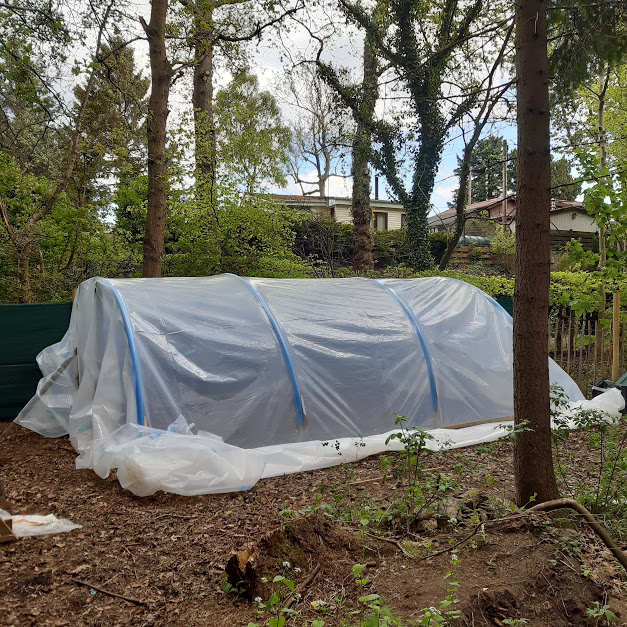
March, April and May are super-busy
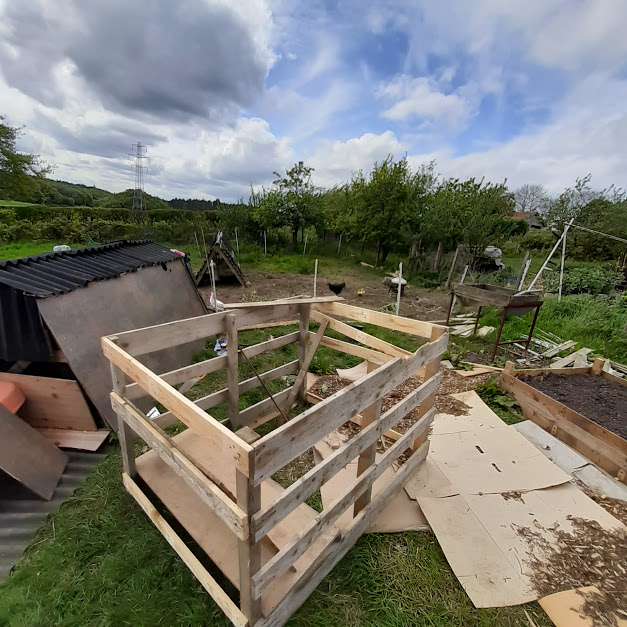
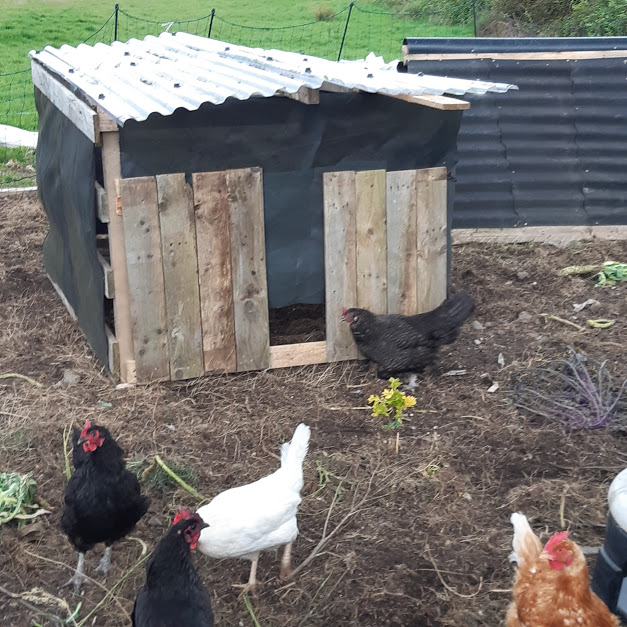
The original hen house has passed it’s use-by date and a new one has been erected. Pallet wood for the sides, covered with trampoline mat to allow some air flow, a rollaway nesting box and skids to make it easy (easier) to move.
The hens seem to like it.
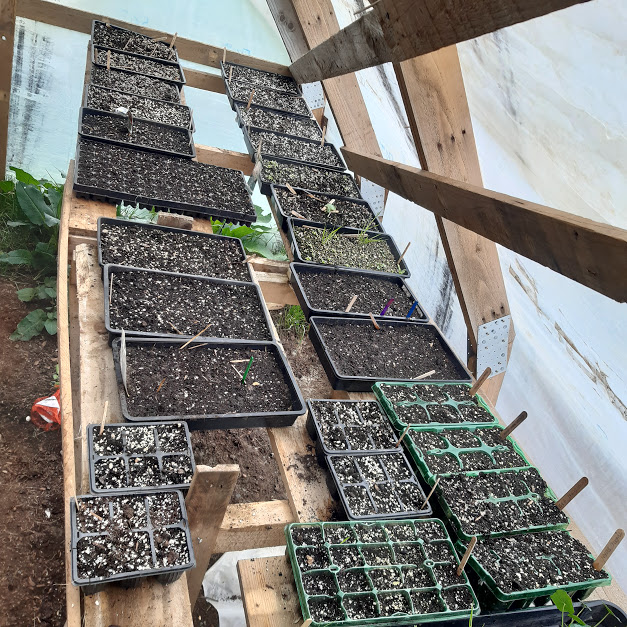
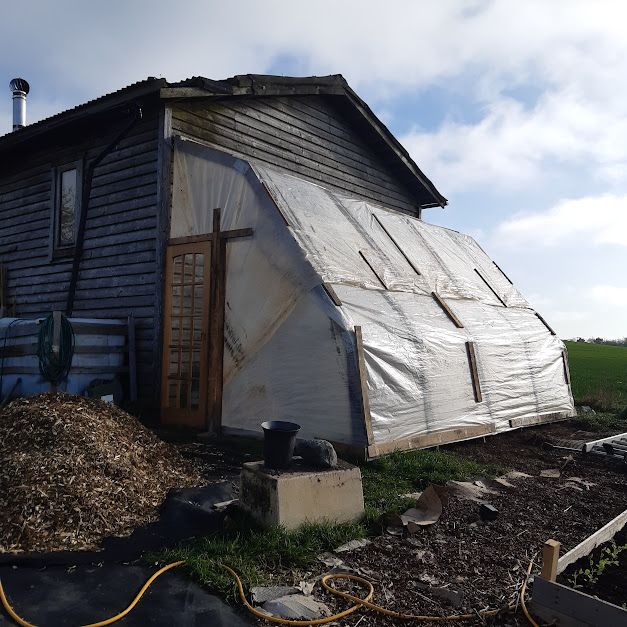
The design and construction was helped by the Home Educated children and is now in full swing with staging made from pallets covered in trays. The plastic is not as clear and does not let as much heat in as the main polytunnel but it’s perfect for seedlings
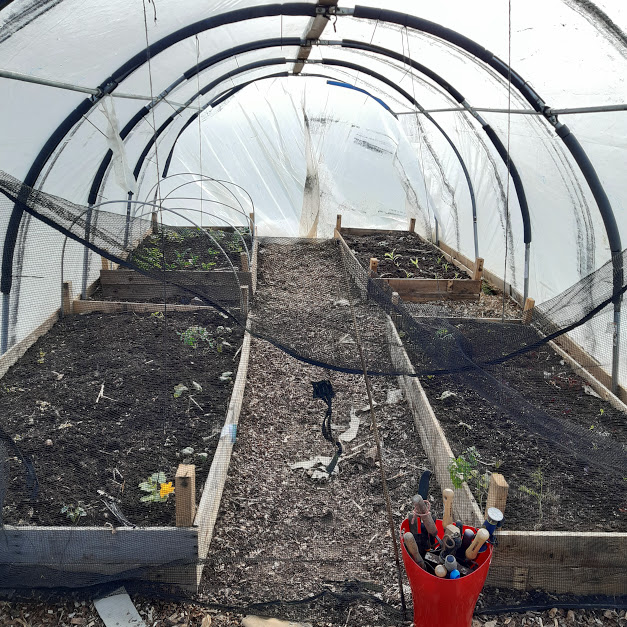
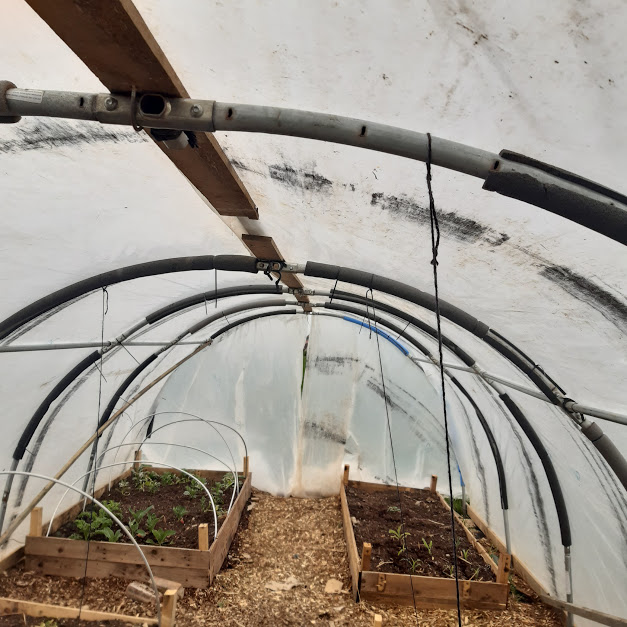
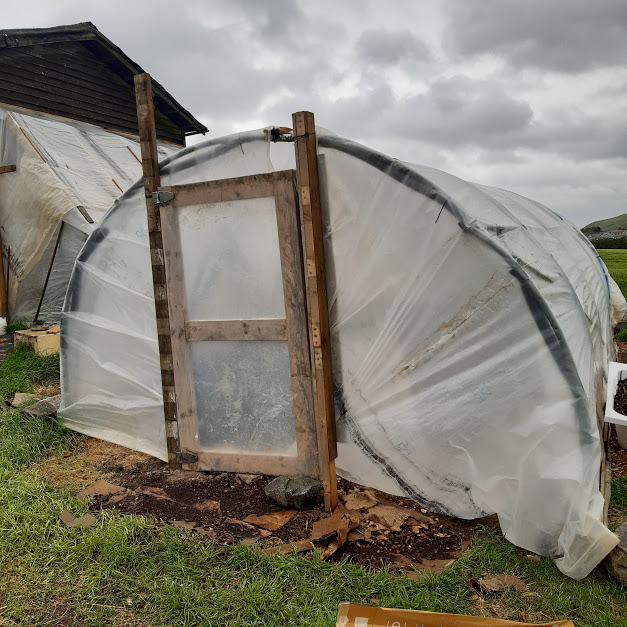
Probably the most fun to put up using discarded 10ft trampolines, donated plastic and raised beds made with pallet wood. It needs a little more work. This space is managed by the Home Educated children, and the poly tunnel is technically portable, hence the huge blocks holding it down.
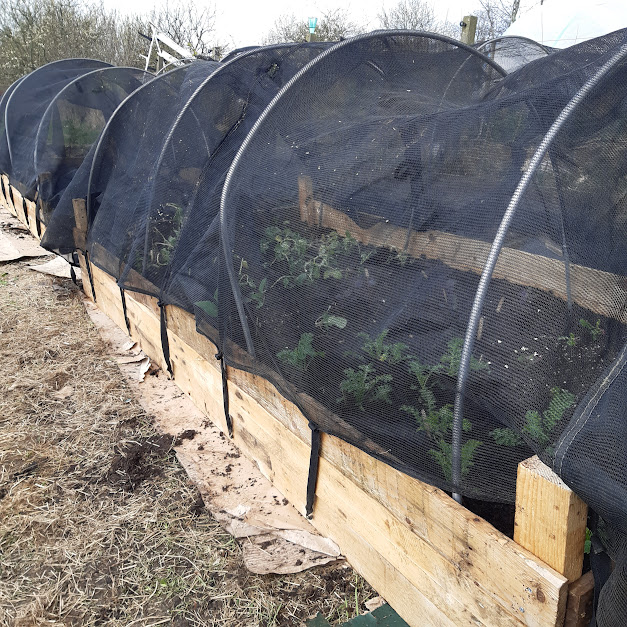
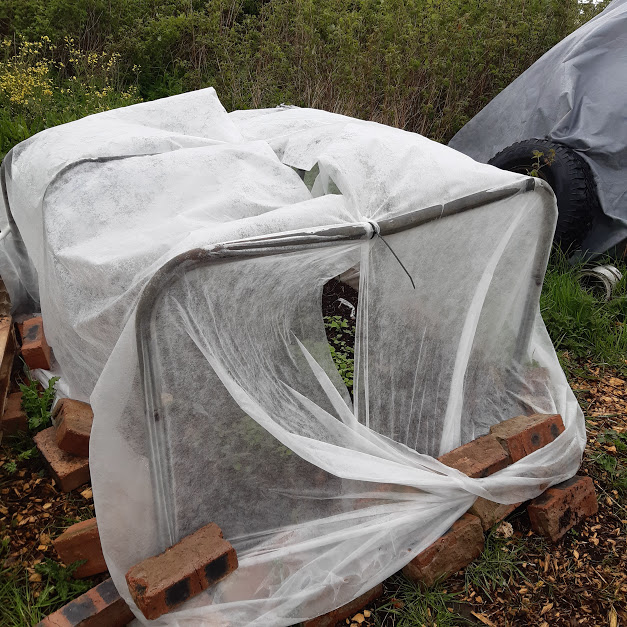
The nets that keep the children from falling off the trampoline are ideal for beds to keep off chickens, butterflies and slow down the wind. The legs that hold up the trampoline, when inverted are perfect hoops for netting or fleece.
Who thought volunteering could benefit your mental health?
Volunteering at the Sanctuary Garden offers a few things;
- It is outside with a view over the Forth Valley, the three bridges and Edinburgh.
- If it’s cold or wet, there is shelter in a warm poly tunnel.
- There is no pressure to actually do anything, you’re welcome to just chat with a cup of tea to escape the interminable torrent broadcast of bad news.
- Everything grown is shared, with volunteers, foodbanks and those in need.
- You’ll probably learn something new. Grant is fascinated with plants, nutrients, organic practices that work in the real world, nutrition, carbon sequestration and soil health.
- If there are seedlings and or vegetables that are ready, you may take some home
These volunteers from Aegon, spent a morning and constructed two raised beds with pallet wood, coated in veggie oil, as a preservative, filled them with straw, manure and compost and finally planted some seedlings.
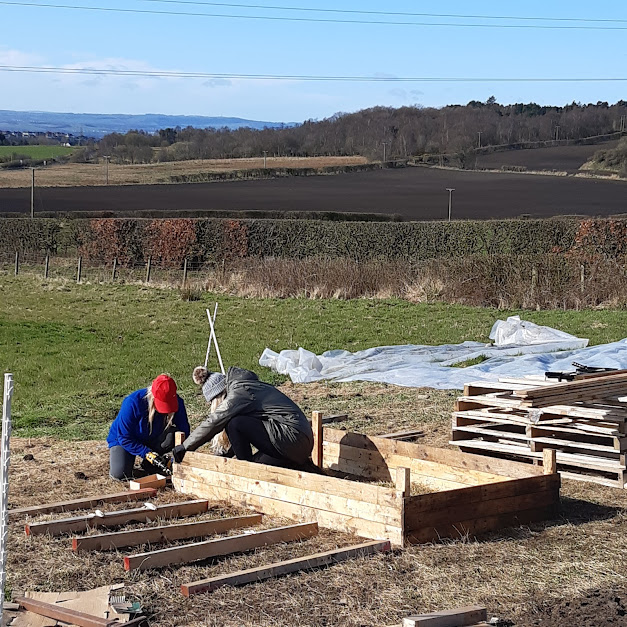
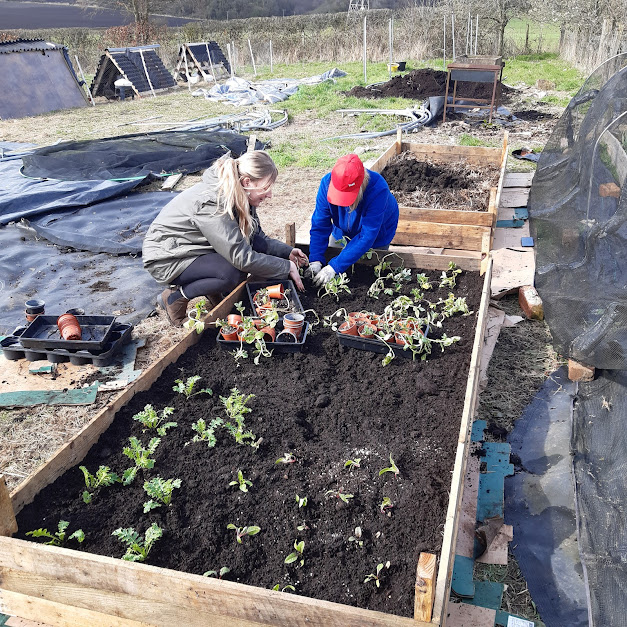

Its rewarding, not too much heavy lifting and a distraction from the day to day humdrum, even though a lot of work was discussed.
The cover is back on after the storm
It was a surprisingly easy job to pull the cover back over. What did take time was putting in cross bars, extra supports and cross bracing. That was done when the rain and wind was not awful.
Our MSP (Scottish MP) had a lot to do with it too: A deadline focuses the mind. My dad, who is 80 and Rory helped sort pots that had become a jumbled heap. One of the home ed kids on the spectrum and has no filter said “what a mess” and he was absolutely right, despite is mother apologising profusely.
Shirely-Anne said “Really grateful to receive Grant’s invitation and to hear all about the great work they’ve been doing to encourage young people to get involved with volunteering and growing nutritious food and Oscar definitely enjoyed himself in his new role as my Constituency Assistant.”
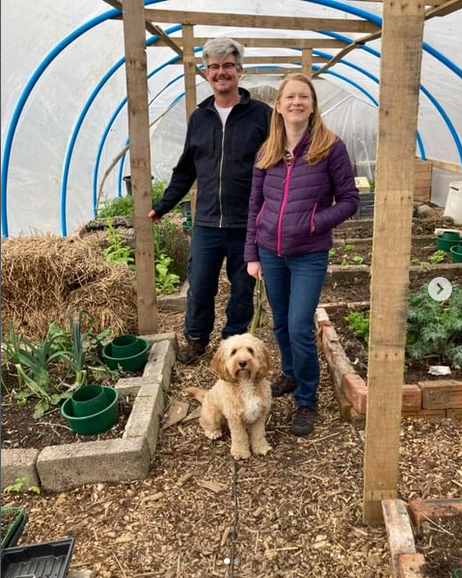
More bark chips down made it less muddy and lots of the ‘projects’ scrapped and disposed of, as I’d never get to them, the place looks reasonable.
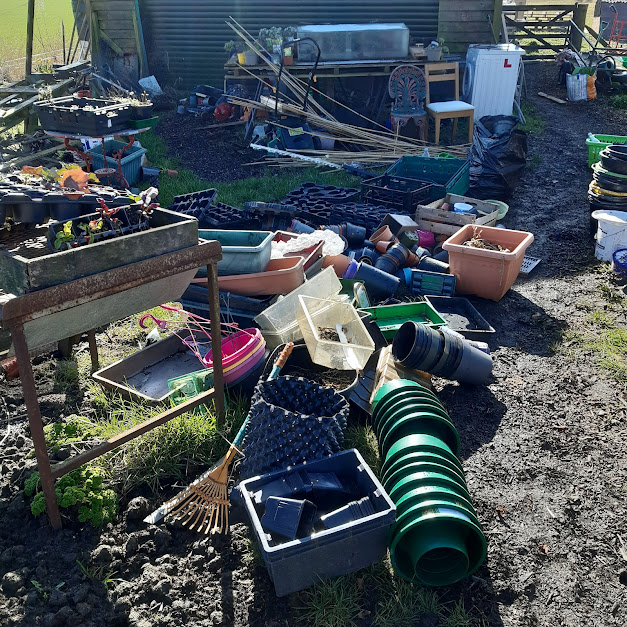
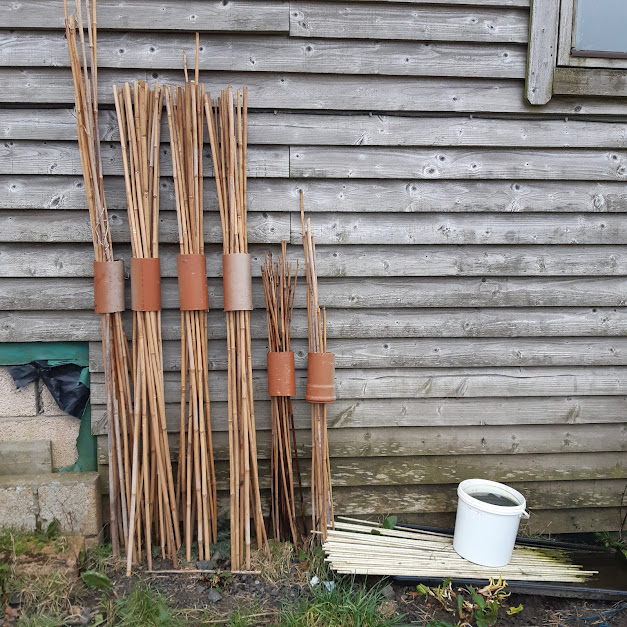
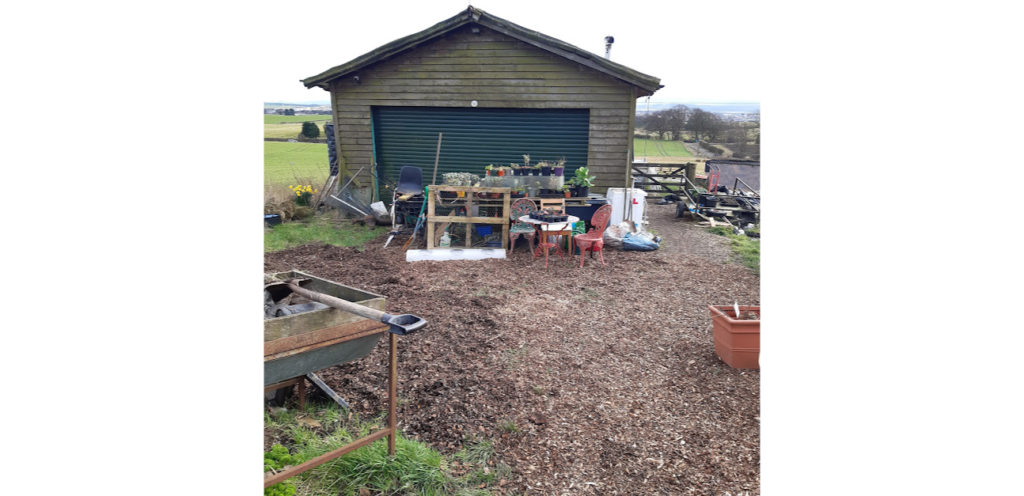
Planting time is upon us and my polytunnel is now filling with trays of seeds. Last night was a frost and I had not protected pumpkins and cucamellons, I was expecting to find green mush, but they are still standing. Phew.
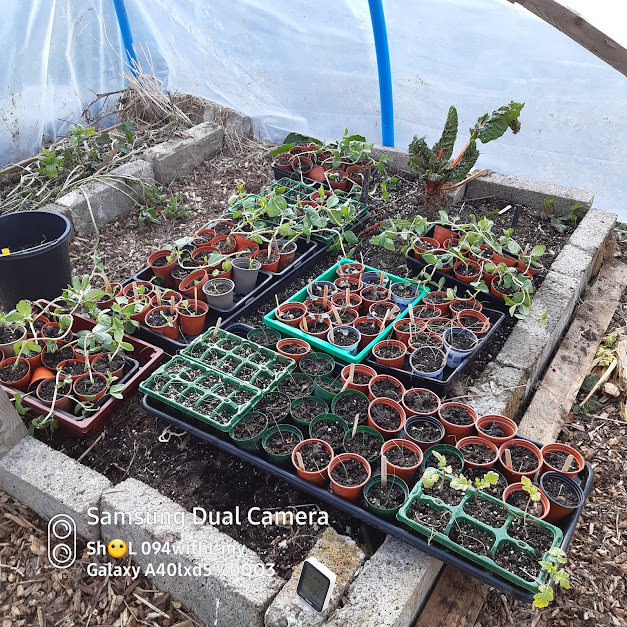
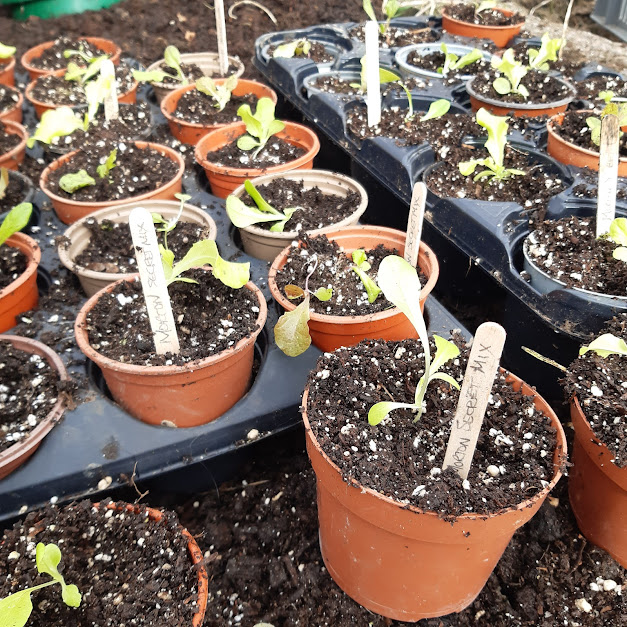
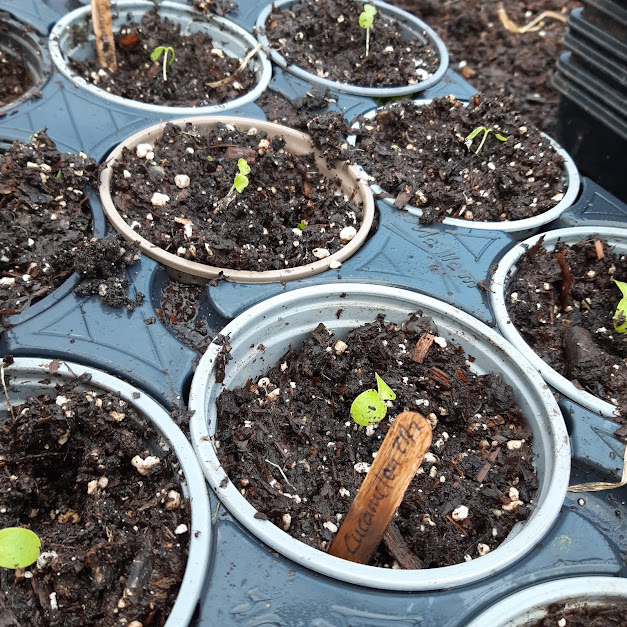
The outside lettuce, spinach and beets are all frosted but doing quite well. The Equinox is nearly upon us
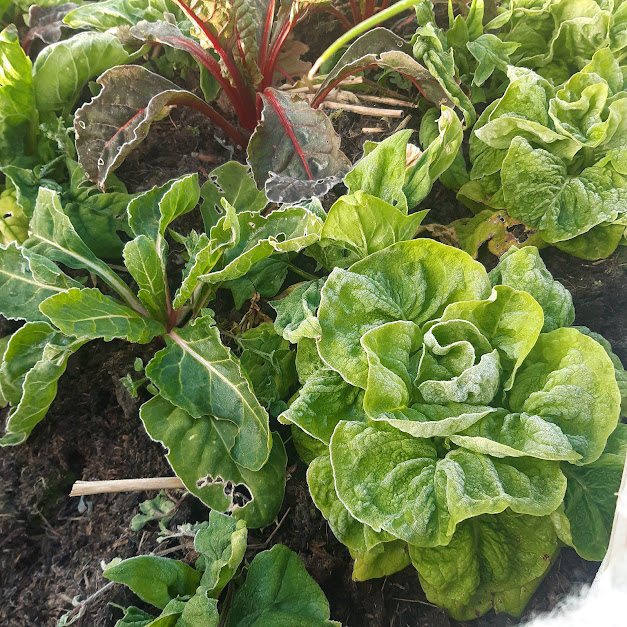
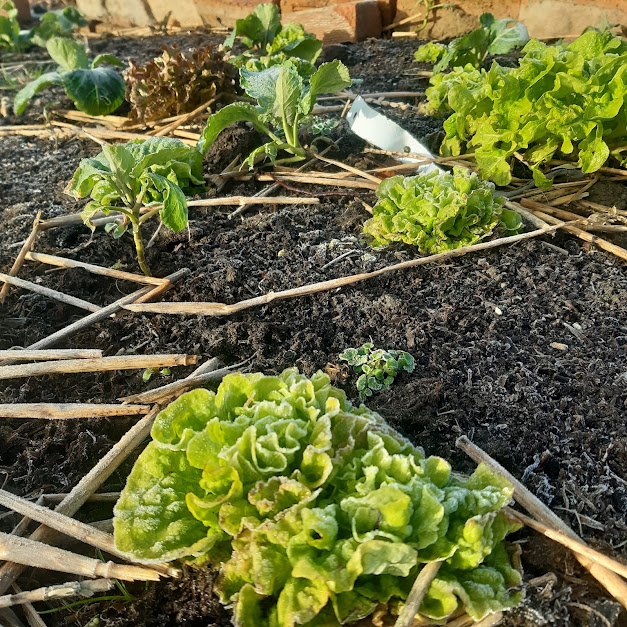
Free Workshops and Seed Swap
The poly tunnel structure has been modified several times and the cover will go on as soon as this wind gives me a few days break.
Having donated to Eat’s Rosyth, and used their classroom in the orchard for classes, I applied and been appointed their Volunteer Co-coordinator. It’s 15 hours a week so I’m able to continue with the Sanctuary Garden and care for Sara, my wife.
The sap is rising and you can see daffodils and snowdrops appearing, and I’ve seedlings pushing up their heads in seed modules. It’s an exciting time of year.
Below are 314 varieties of vegetable seeds. The flowers are not as extensive but will be added shortly. If you would like a few seeds, I’m happy to arrange to meet or post the seeds. Drop me a note.
There are two courses starting, these are the beginner courses next week that are aimed at those who have tried and failed or are just starting out. These workshops aim to demystify without dumbing down. “Not too wet, not too dry” It will also save you purchasing equipment and supplies you don’t need. Which compost? What is vermiculite or perlite? How deep can I plant a seed? How to stop slugs without poison? Do I care about NPK on fertilizer?
These are the 4 week workshops on Eventbrite, one on Wednesday evening 7-8pm and the other on Saturday 10-11am
https://www.eventbrite.co.uk/e/262630584147
https://www.eventbrite.co.uk/e/263086808727

Following on from these courses is one combining Composting and Korean Natural Farming, also for four weeks. These will delve into composting methods, some that I’ve found work well and include a wormery and Bokashi. The Korean Natural Farming (KNF) method is aimed at substance farmers and reducing their costs of fertilizers and pesticides by making them at home. I have first hand experience of their effectiveness both on growth and yield as well as slugs and caterpillars.
https://www.eventbrite.co.uk/e/263131361987
https://www.eventbrite.co.uk/e/263294038557
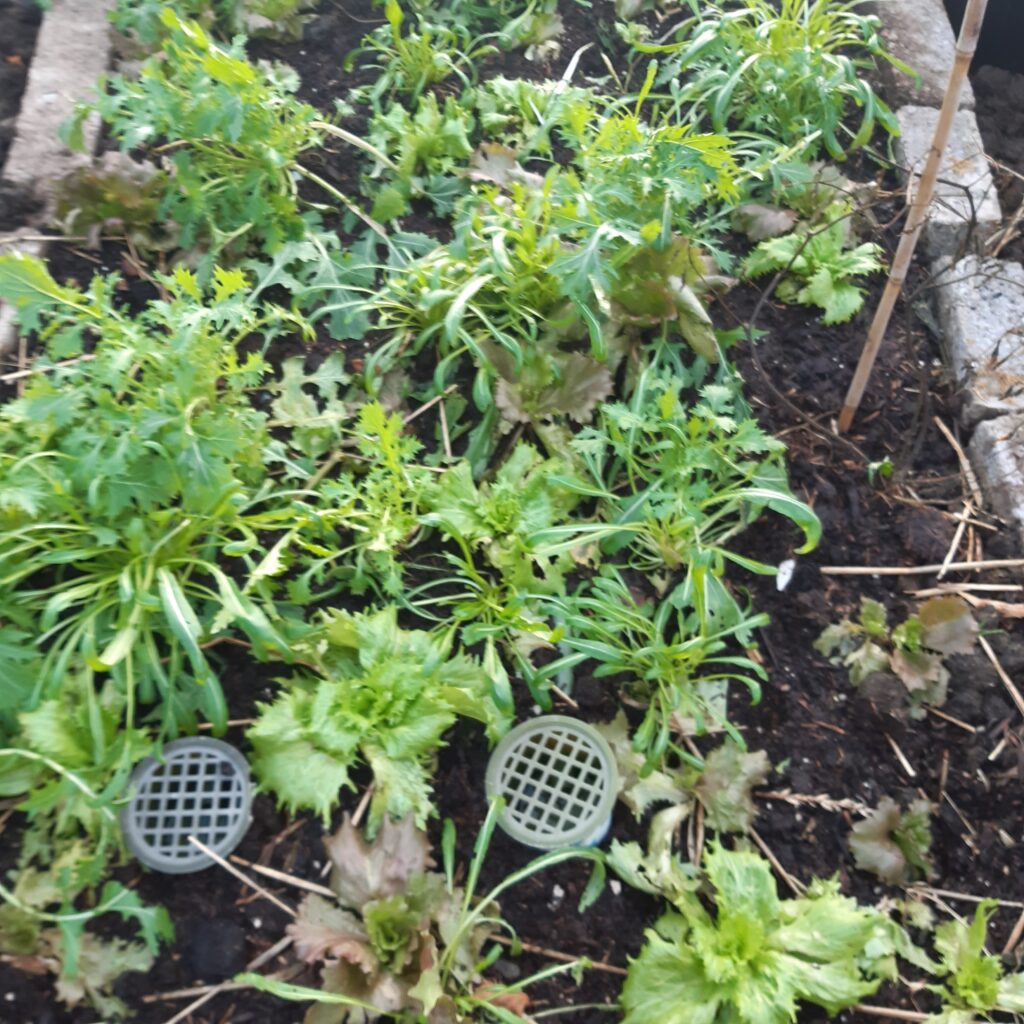
Did wind just break?
They come in threes. A part of the shed roof landed nails down on the bonnet of the car. 2. The polytunnel cover is off and the hen runs, not the hen house, were rolled down the hill. The plan is to rethink the build idea and ….. make a stronger structure.
A few photos
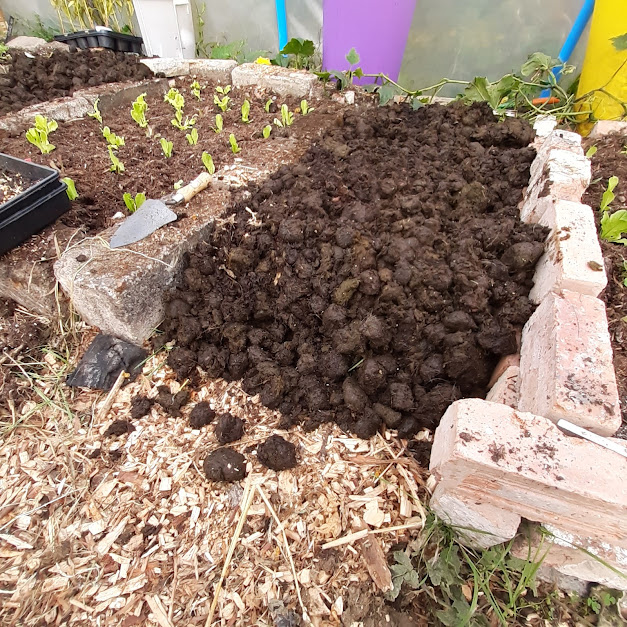
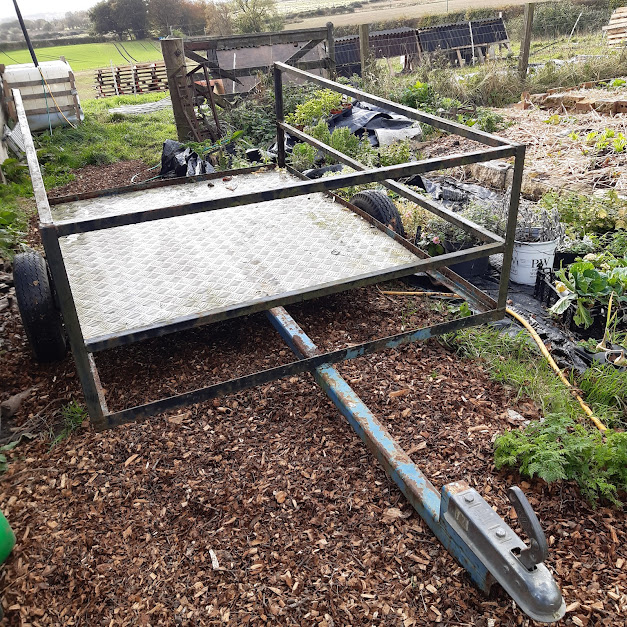
A shell of a trailer 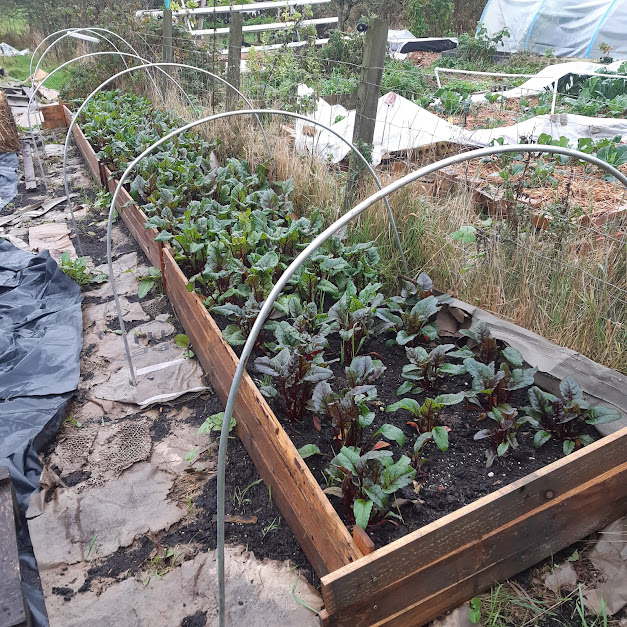
Hoops over the beetroot bed 
Fleece
15 Hens working for their food in the Tractor
The two groups of hens integrated with not too much fuss. It’s taken them less than a week to scratch up 16′ x 4′ and I now have to decide how best to move the tractor with the hens.
Years ago, I heard that Mr Fox is a clever old man, and is particularly wary of human voices. On one of the gardening shows in the ’90s I heard of a chicken owner who had bother with foxes eventually resort to a transistor radio set to Radio 4. I’ll have hens with an incredible general knowledge and handle on current affairs.
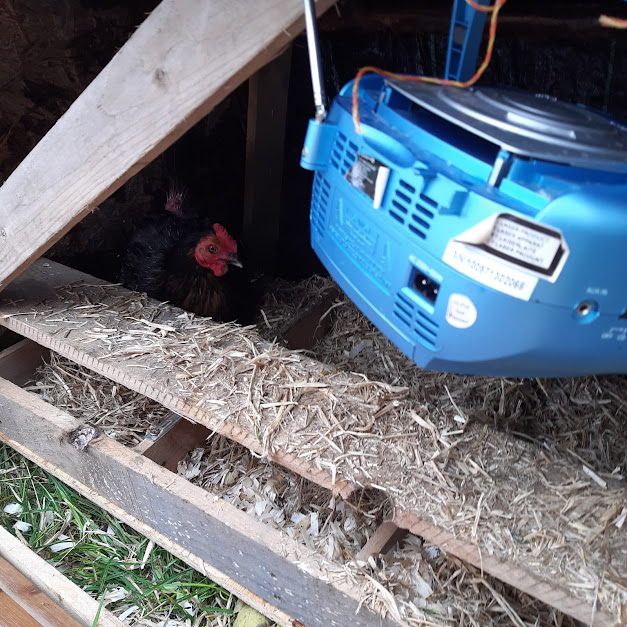
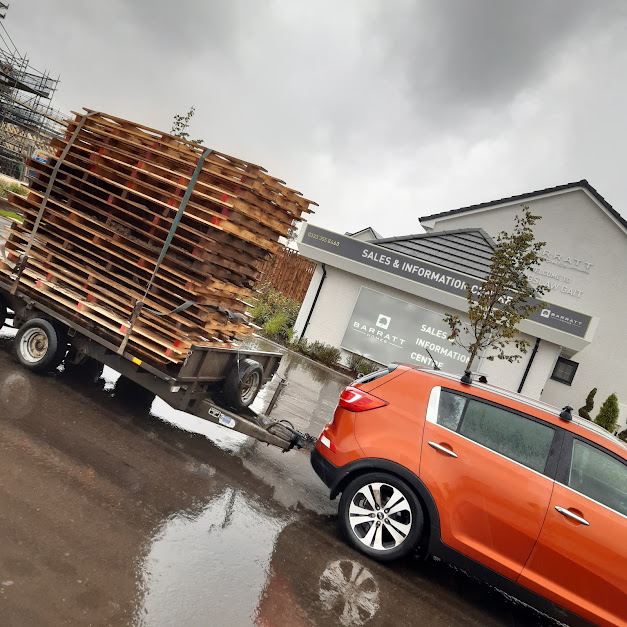
Winter planting now?
It is that time. I can remember that after the potato harvest, that was it. Soil was cleaned of all vegetation and left exposed for the frost to break it down to a fine tilth. Now I know that’s probably the worst thing you can do; soil microbes die without live roots, nutrients get washed away with the top soil, and the soil compacts.
This is the first winter at The Sanctuary Garden, and so far we have, Imperial Wheeler Cabbage planted, and interplanted with lettuce, Lolo Rossa, Little Gem and Tom Thumb in one bed, winter spinach, Vulcan Chard – deep red stemmed variety, and Winter wonder lettuce. Of course the garlic from the Really Garlicky Company up in Nairn, is in the first bed in the field. It’s been over planted with beetroot, that is now taking off and looking particularly happy.
The water tank has been moved to the corner of the shed, now that I have a pump connected to a hose. It makes it easy watering anywhere in the garden. The only downside is if I fill a watering can and leave the hose in it and turn off the pump, it siphons empty.
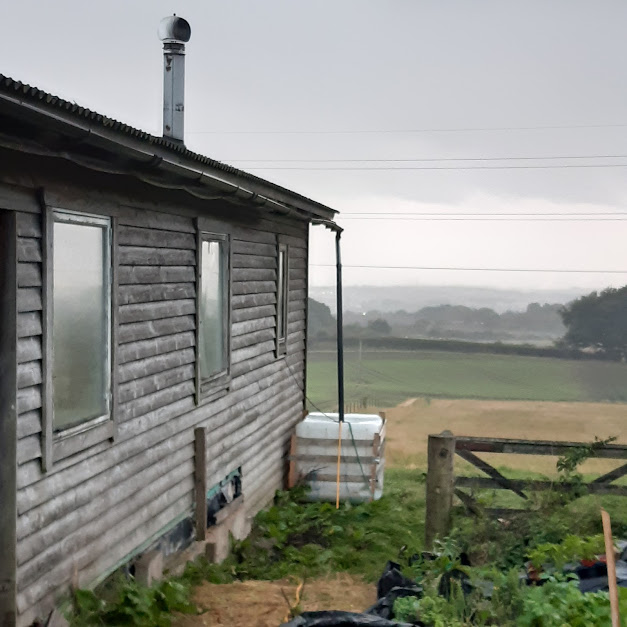
Why grow heritage wheat Now?
There was an interesting podcast where heritage wheat was mentioned as a cover crop that provides lots of carbon for the soil microbes after the harvest. Chopped and dropped. They mentioned it grew to around 5 foot, which surprised me as the modern wheat I’ve seen is much shorter, some as short as 2’.
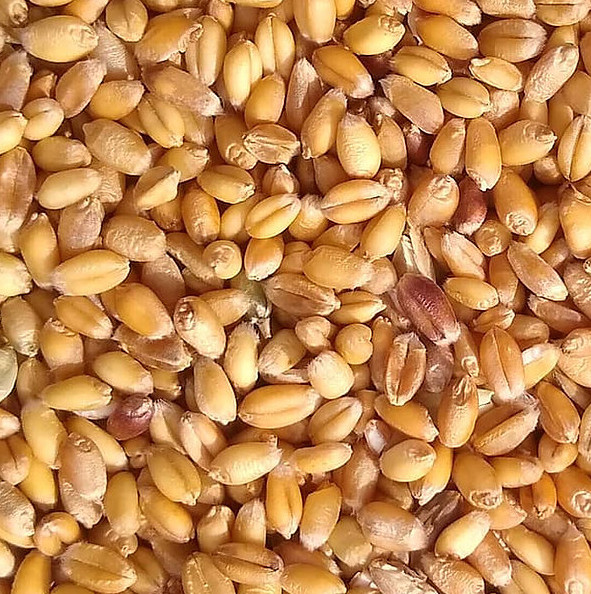
It’s also interesting that the flavour of these older varieties are in demand by bakers as they provide both better flavour and different amounts of gluten, starch and proteins. According to a research paper “suggests that modern wheat breeding practices may have led to an increased exposure to celiac disease epitopes”
Besides having to thresh, hull, grind, and generally slave to make a pound of flour, it would be an inexpensive way of feeding hens.
It has been ordered and it’s not seed wheat, it’s supposed to be destined for milling, getting around the draconian 1964 seed rules, forcing the loss of valued genetics forever.
Red Lammas. A once very widely grown and popular variety first mentioned in 1650 and lauded as ‘The King of wheats’ By Ellis in 1747. This wheat was probably Elizabethan in origin and may well have been part of the English soldiers and sailors diet at the time of the Spanish Armada. A lovely reddish brown colour when in ear with medium sized hard red grains.

Millers Choice. A modern mix of many domestic and foreign heritage wheats. That just sounded interesting and may provide a wide range of wheat, allowing the selection of the best growing variety for this location.
The planting on the site is detailed as follows
Notill has been around for quite a while, it’s not new its the way nature plants, seeds are dropped on the ground and they grow. Not all of them as they are exposed to being eaten or too dry but enough survive to keep the species going. We need slighly better odds than that to feed 6 billion people so we aim to place the seed where it has the best chance of surviving. For cereals that is about 1 1/2 inches deep (in old money) into soil and covered to keep it away from anything looking for a meal.
My drill has sharp discs to cut any vegetation and also a slot into the ground, seeds are blown in and a following wheel closes the slot and firms the soil around the seed. The old vegetation is left where it should be on the surface as food for all the citizens of the soil from bacteria and fungi to worms mice and beetles. Amazingly it dissapears as the nutrients are recycled and organic matter is taken into the soil. This sequesters a lot of carbon from the atmosphere as well.

